Seascapes
SEASCAPES
04.11.20–09.05.21 | Draiflessen Collection
04.11.20–09.05.21 | Draiflessen Collection
Draiflessen Collection
Georgstraße 18 | D-49497 Mettingen
+49 (0) 54 52. 91 68-0
info@draiflessen.com | www.draiflessen.com
Georgstraße 18 | D-49497 Mettingen
+49 (0) 54 52. 91 68-0
info@draiflessen.com | www.draiflessen.com
The sight of the sea holds an inexplicable fascination for many people. This fascination reveals itself in art through the epochs. In the seventeenth-century Netherlands, in particular, representations of ships and the sea became pictorial motifs in their own right. A new artistic genre was born: the seascape. Dramatic naval battles, fleet reviews and coastal landscapes, whether familiar from daily life or tinged with yearning, reflect both the political and public interest in seafaring. The Seascapes showcase exhibition illuminates the various facets of the genre and its development in a selection of drawings, prints and a painting from the Draiflessen Collection, which are presented together with nautical instruments from the same period.
War and Trade
In the seventeenth century – the “hour of birth” of the seascape – Europe’s three leading naval powers, namely England, the Netherlands and Spain, were vying over maritime trade routes. The oceans increasingly became the setting for bellicose skirmishes, which shaped day-to-day political life in Europe and consequently found their way into artistic representations. The fierce rivalry over trade routes was directly related to the economic development of the countries involved. The Dutch Golden Age produced a wealthy mercantile middle class, whose members became the new patrons of art. They were thereby interested in motifs of a more quotidian nature, showing the world in which they lived – including in first place the world of commerce. Views of harbours dominated by large numbers of tall ships leave no doubt as to the economic power of this clientele.
Humankind and the Sea
The detailed representations of ships, so elaborate that they may be called portraits, illustrate the interest in seagoing vessels and the estimation in which they were held. Again and again, they are shown in stormy seas, defying the weather and the tides. Heeling dramatically to one side and with sails billowing, they navigate the open sea or ply their course along coasts and past ports. Where boats are shown sailing along rocky coastlines, they seem to some extent to serve as a link between humankind and nature. This connection is charged with ambivalence, however: while seafaring facilitated expansion beyond national boundaries and not least economic and political success, the sea herself remained a perilous force of nature.
The nautical instruments on display as part of the exhibition are loans from the Deutsches Schifffahrtsmuseum in Bremerhaven, the Maritiem Museum in Rotterdam and the Zuiderzeemuseum in Enkhuizen.
Public programme
The Seascapes exhibition will be accompanied by regular public guided tours and a programme for children.
Publication
A copiously illustrated trilingual catalogue (German/English/Dutch) is being published in conjunction with the exhibition.
Credits
Willem van de Velde II, Maritime perspective study, ca. 1700, Draiflessen Collection (Liberna), Mettingen D 111 (Photo: Stephan Kube)
Willem van de Velde II, Dutch Frigate with Hanging Sails, ca. 1694, Draiflessen Collection (Liberna), Mettingen D 108 (Photo: Stephan Kube)
Frans Huys (after Pieter Bruegel the Elder), Two Galleys and a man of war, 1560s, Tuliba Collection TP 0055 (Photo: Stephan Kube)
Jan Abrahamsz Beerstraten, Ships on a Tempest Sea, 17th century, Tuliba Collection TD 0002 (Photo: Stephan Kube)
Allaert Pietersz van Everdingen, Seascape with Rock Formations, 17th century, Draiflessen Collection (Liberna), Mettingen D 104 (Photo: Stephan Kube)
Cornelis Claesz van Wieringen, The French Port of La Rochelle, ca. 1627/28, Draiflessen Collection (Liberna), Mettingen D 114 (Photo: Stephan Kube)
Hendrik Cornelisz Vroom, Warships in Calm Waters, late 16th /early 17th century, Draiflessen Collection (Liberna), Mettingen D 107 (Photo: Stephan Kube)
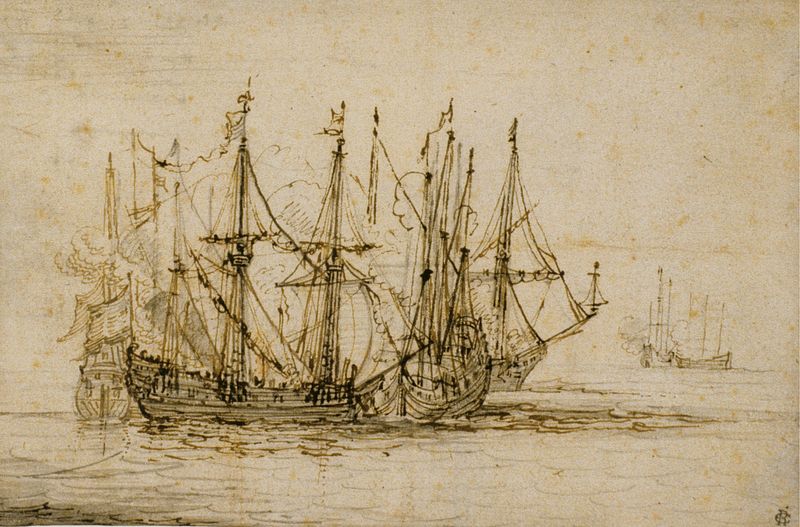
Hendrik Cornelisz. Vroom, Kriegsschiffe in ruhigem Gewässer, Ende 16. /Anfang 17. Jahrhundert
| © Draiflessen Collection (Liberna), Mettingen
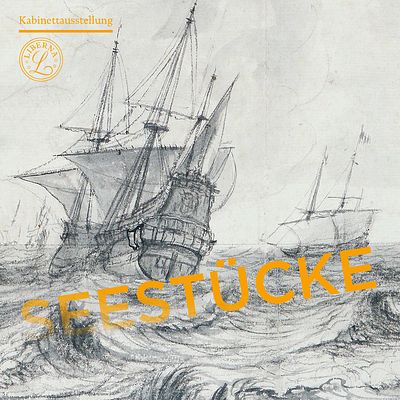
SEASCAPES

Hendrik Cornelisz. Vroom, Kriegsschiffe in ruhigem Gewässer, Ende 16. /Anfang 17. Jahrhundert
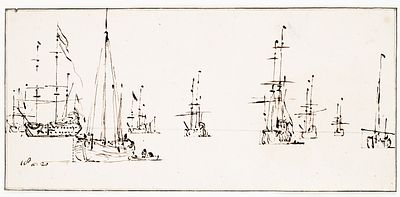
Willem van de Velde II, Maritime Perspective Study, ca. 1700
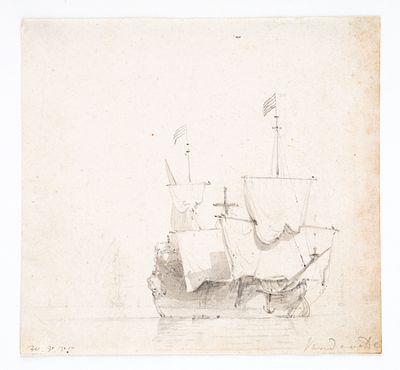
Willem van de Velde II, Dutch Frigate with Hanging Sails, ca. 1694
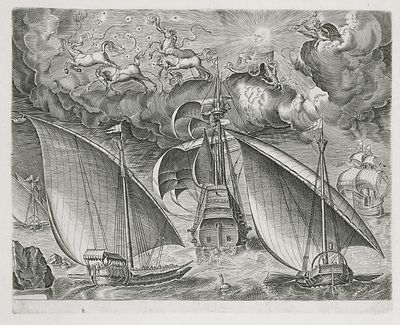
Frans Huys (after Pieter Brueghel d.Ä.), Two Galleys and a Man of War, 1560s
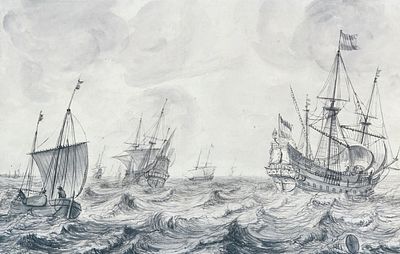
Jan Abrahamsz Beerstraten, Ships on Tempest Sea, 17th century
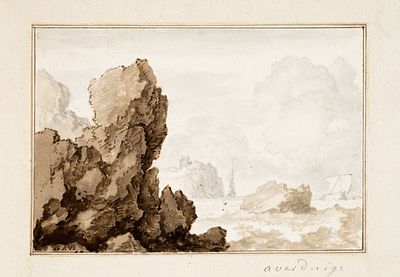
Allaert Pietersz van Everdingen, Sea View with Rock Formations, 17th Century
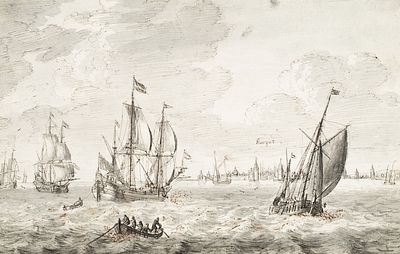
Cornelis Claesz van Wieringen, The French harbour La Rochelle, ca. 1627/28